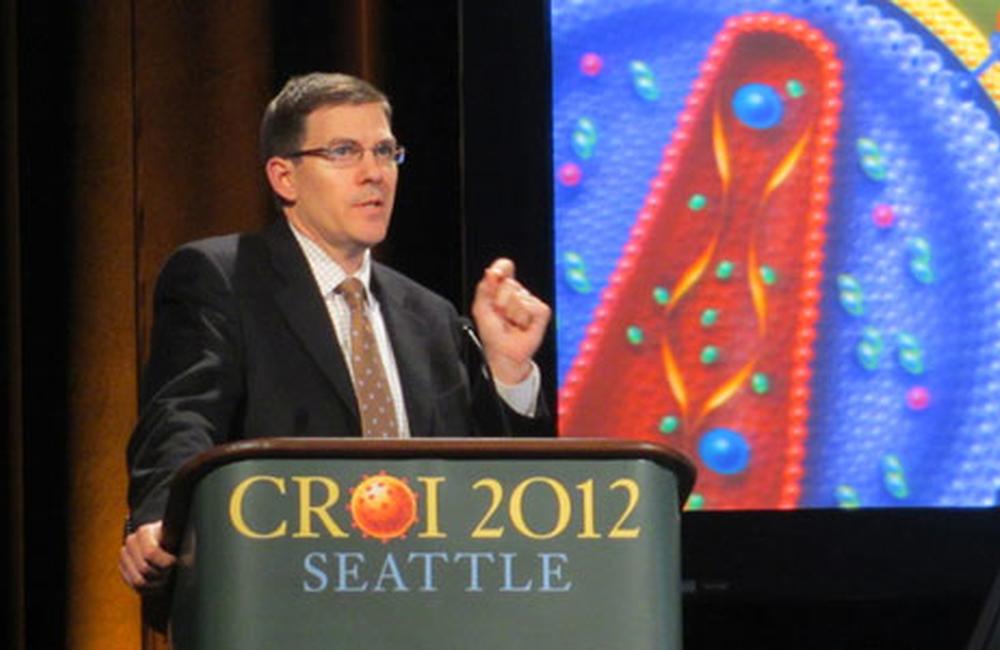
Cholesterol-lowering statin drugs showed a trend toward lowering the risk of non-AIDS events and death among people with HIV in a large US cohort, researchers reported last week at the 19th Conference on Retroviruses and Opportunistic Infections in Seattle.
Several observational studies have shown that people with HIV are at higher risk than the general population for non-AIDS conditions including cardiovascular disease and cancer. While the underlying cause is not yet fully understood, persistent HIV infection itself, resulting in inflammation, antiretroviral drug side-effects and traditional risk factors such as smoking may all contribute.
Researchers are exploring a variety of approaches that may help reduce this risk including medications and lifestyle modifications.
Turner Overton from the University of Alabama at Birmingham presented findings from a study of statin use and its association with major clinical events and non-accidental death among participants in the ACTG Longitudinal Linked Randomized Trials (ALLRT) cohort. This was an observational study looking at what type of treatment patients happened to receive; they were not randomly assigned to receive or not receive statins.
Statins are generally used to lower elevated low-density lipoprotein (LDL) or 'bad' cholesterol, but they also have anti-inflammatory effects and large studies of HIV-negative people have shown that they reduce the risk of cardiovascular events such as heart attacks and strokes even among people without elevated cholesterol.
Overton's study included 3601 participants who had started combination antiretroviral therapy (ART) in an ACTG study and remained in long-term follow-up. Participants were not taking statins at baseline. About 80% were men, about half were white, 30% were black and the median age was 39 years. The median current CD4 cell count was about 350 cells/mm3, but the median nadir (lowest-ever) level was 180 cells/mm3.
Looking at baseline cardiovascular risk factors, just under 40% were current smokers, the median systolic blood pressure was 120 (normal), 73% had normal LDL (<130 mg/dL) and only 10% had a Framingham score indicating high cardiovascular risk.
The researchers looked at how many participants started statins during the study and time to development of non-AIDS-defining end-organ disease or non-accidental death. Over the course of follow-up (15,135 person-years), 481 participants (13%) started taking statins and 616 events of interest occurred. These included 144 new cases of diabetes, 124 severe bacterial infections, 115 cases of kidney disease, 81 non-AIDS cancers, 42 cardiovascular events, 17 cases of thrombosis (blood clots) or pulmonary embolism, 9 cases of liver disease, 8 non-traumatic fractures and 76 non-accidental deaths.
In an unadjusted analysis more people taking statins experienced events than those not on statins (4.4 vs 4.0 per 100 person-years), but this reflected in part the greater risk and poorer health of people who needed to start these medications.
After controlling for baseline factors, the adjusted hazard ratio (HR) was 0.81, reflecting 19% reduction in the risk of non-AIDS events or non-accidental death, but the difference did not reach statistical significance. When early events were excluded (those occurring soon after starting statins, before they had much time to work) the risk fell by 12%. The beneficial effect was greatest for older patients and those with low nadir CD4 cell counts.
Separating out event types, the adjusted risk of cardiovascular events was 11% lower among statin recipients (HR 0.89) while non-cardiovascular events decreased by 15% (HR 0.85), both also non-significant. The only significant decline was in cancer rates, which fell by 57% among statin recipients (HR 0.43). Looking at non-accidental death alone, the reduction was 18% (HR 0.82).
The researchers concluded that, "Statin therapy was associated with a non-significant reduction in time to first non-AIDS events or death."
"Although not statistically significant, they added, "the observed effect increased with age and was influenced by nadir CD4 count."
Responding to a question about the reduction in cancer risk, Overton suggested that perhaps statins might have an influence on immune surveillance of malignancies.
Overton E et al. Effect of statin therapy on reducing the risk of serious non-AIDS-defining events and non-accidental death: ACTG ALLRT cohort. 19th Conference on Retroviruses and Opportunistic Infections, Seattle, abstract 124, 2012. The abstract is available on the official conference website.
A webcast of the session, Metabolic and Cardiovascular Complications, is available through the official conference website.
